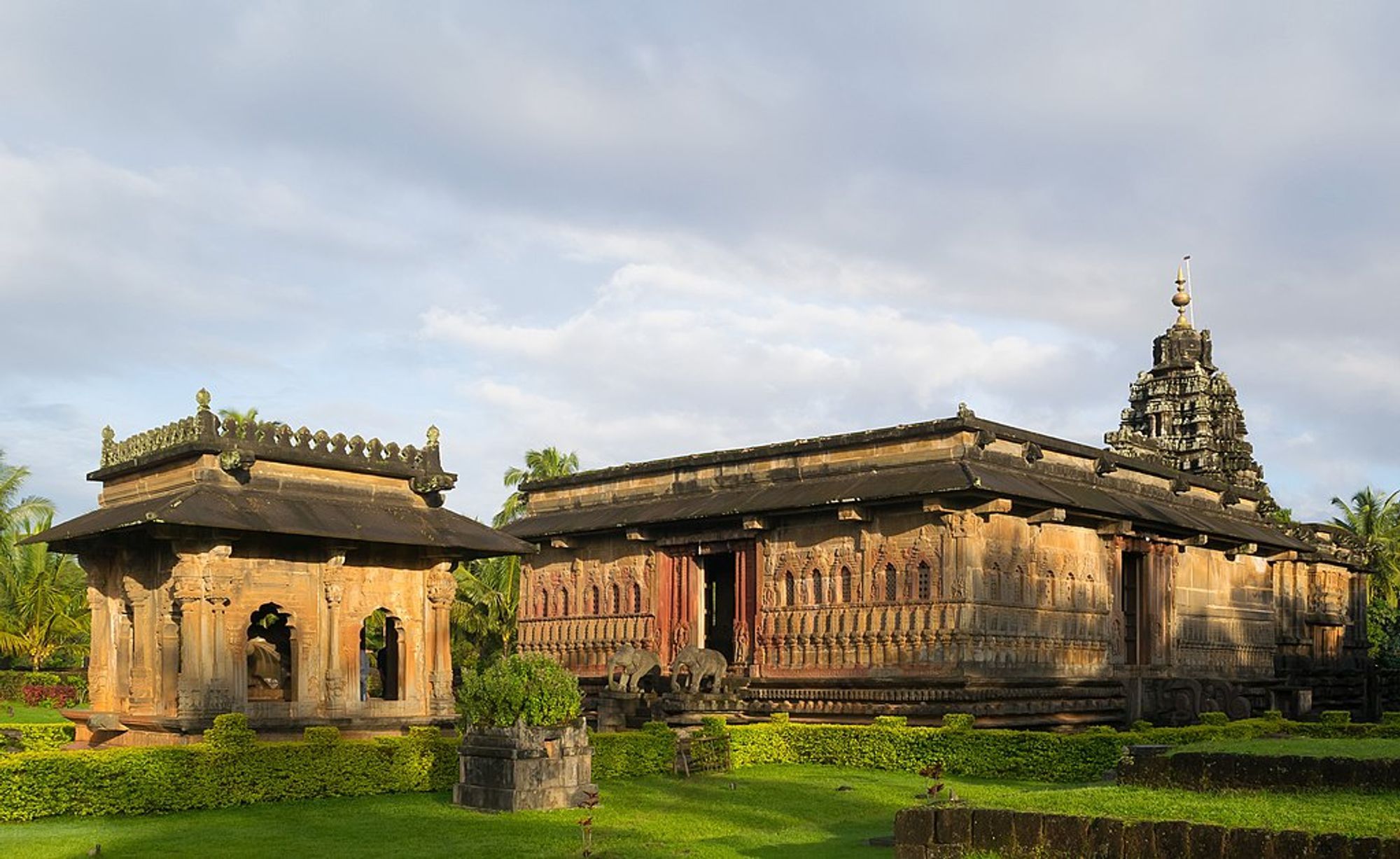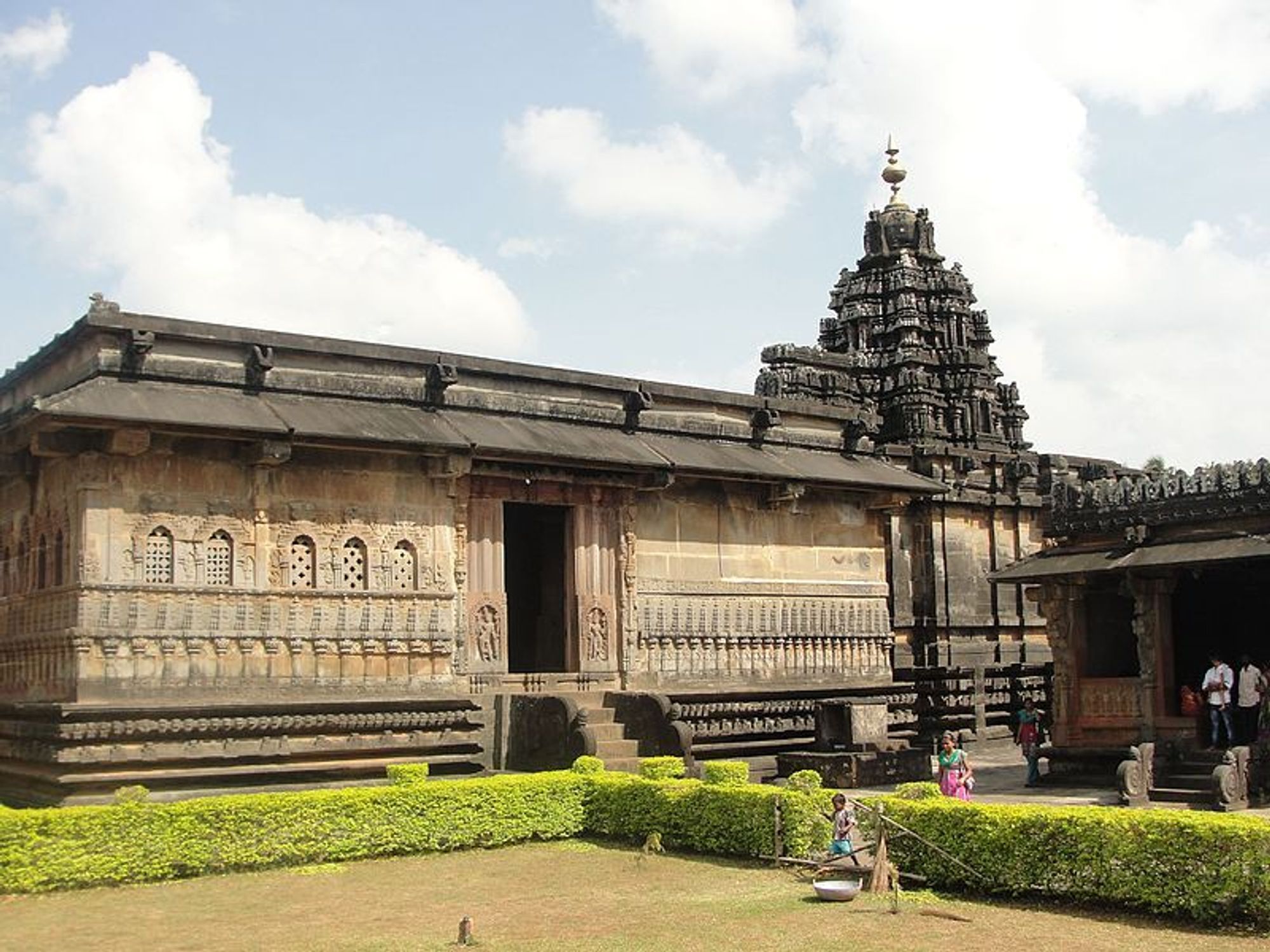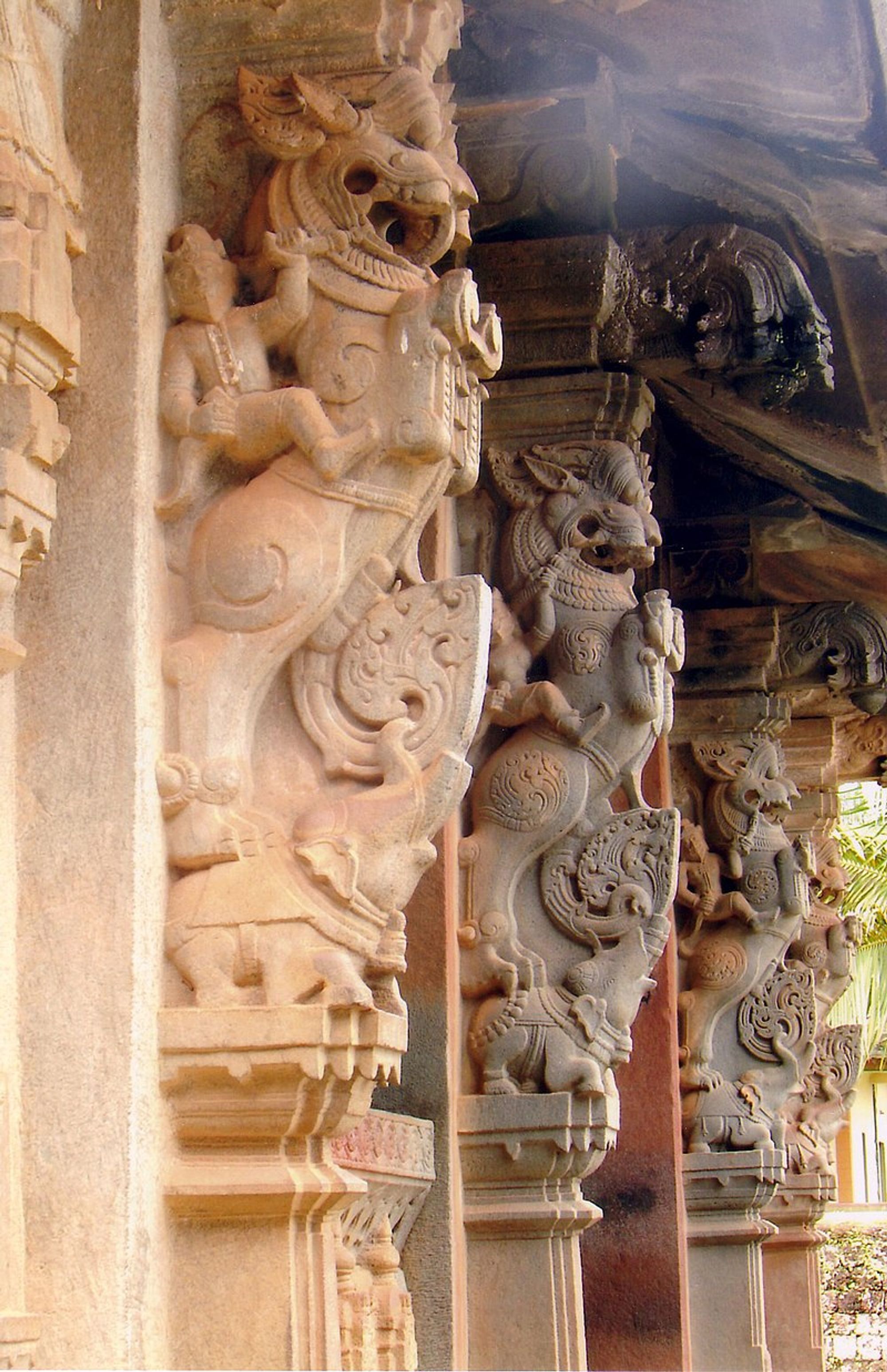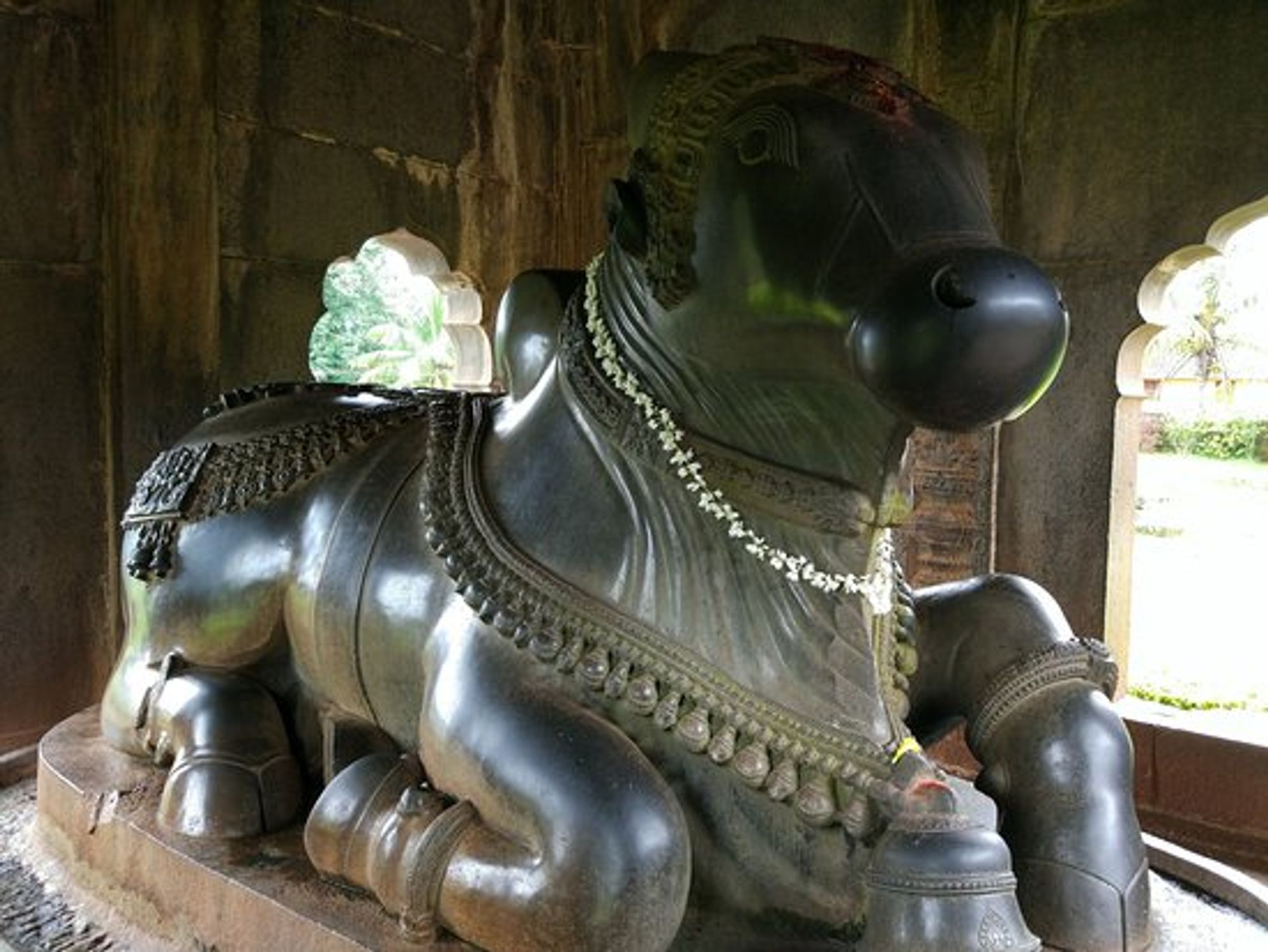The Enigmatic Shrine of Ikkeri
The Aghoreshwara Temple is a beautiful and historic temple located in the town of Ikkeri, in the Indian state of Karnataka. The temple is dedicated to Lord Shiva and was built during the 16th century, under the patronage of the Keladi Nayakas, a dynasty that ruled the region at that time. This impressive temple is built in a unique style that has the influences of the Dravida, Kadamba, Hoysala, and Vijayanagara schools of architecture.

The Aghoreshwara Temple (Source- Wikipedia)
Located at a distance of about 77 kilometers from Shimoga, lies a small town situated in the Sagara taluk of Shimoga district, Karnataka. One of the best heritage places to visit in the region, this historical town, known as Ikkeri, served as the erstwhile capital of the Keladi Nayakas for 120 years during the 16th-17th centuries. The word Ikkeri in Kannada means 'two streets'.The Ikkeri Nayakas, often referred to as the Keladi Nayakas, were a significant dynasty in post-medieval Karnataka. At first, they held power as a subordinate of the renowned Vijayanagar Empire. However, with the collapse of the empire in 1565, they acquired independence and reigned autonomously over the Malanadu region until 1763 AD, when they were conquered by Hyder Ali and integrated into the Kingdom of Mysore.
The town of Ikkeri also had a mint at that time that produced coins. It served as the capital of the kingdom of the Nayakas of Keladi from around 1560 to 1640 AD until being relocated to Bednur Nagara. Ikkeri however continued to be the nominal capital, the Raajas were called by its name, and the coins were called Ikkeri Pagodas and Fanams, although, in fact, the mint was removed. Its extensive walls formed three circular enclosures.
In Ikkeri, the Keladi kings erected temples, a citadel, and a palace. The palace, made of mud and wood and decorated with carving and fake gilding, was located inside the fortress. Apart from this, using a fusion of late Kadamba, Hoysala, Vijayanagar, and Dravida architectural styles, the Keladi Nayakas constructed some beautiful temples at Ikkeri and Keladi. The use of granite in their building demonstrates that they followed the Vijayanagar architectural model. Elaborate carvings on the walls and ceilings of the structures were prevalent characteristics of the time, and were impressively employed by the Keladi Nayakas. The outstanding specimens of the Nayakas' art may be seen at the Aghoreshwara temple in Ikkeri and the Rameshwara temple in Keladi. Out of these, the Aghoreshwar temple is majorly associated with this medieval dynasty of Keladi.
A lone relic of the town's previous glory, the temple of Aghoreshwara is a huge and well-proportioned stone structure located in Ikkeri. The temple is a stunning example of the architectural style prevalent during the reign of the Keladi Nayakas. Built entirely with the popular granite stone available locally in abundance, this 16th-century temple is a unique mix that incorporates elements from Vijayanagara architecture, which was popular in southern India during the 16th century, with the Karnataka Dravida style of the Later Chalukya dynasty and the Hoysala Empire.
A massive building, the Aghoreswara temple consists of a large shrine devoted to Lord Aghoreswara (Shiva), and another shrine dedicated to Parvati (Goddess Akilandeshwari) to its left. In front of the main shrine, lies a magnificent statue of the sacred bull, or Nandi. The Nandi greets visitors to the temple while lounging beneath a veranda at the entryway. The statue was expertly handcrafted, with flawless finishing and a glazed gloss that is still visible today. This little transparent statue of Nandi (bull) carved out of white spar may be seen in the Sukhanasi.
The temple is situated on an elevated platform within a rectangular structure. It faces north and has a tall roof with beautiful doorways on the west, north, and east, with the north doorway being the finest with two elephants on either side. With two elephants guarding the main entrances, the magnetic Lord Shiva is positioned in the Garbhagriha. Many pillars that support the main temple are decorated with intricate carvings and sculptures. The ceiling is especially intricate and has geometrical patterns inscribed on it. The Mukha Mandapa at the temple is constructed with black basalt stone and consists of 6 pillars.
It is thought that the Shivalinga in the Ikkeri temple is a self-manifested one that was discovered in Shimoga's dense woodlands. The garbhagriha that houses this shivalinga has a giant pedestal occupying around three-fourths of the entire area. This pedestal has 32 seated female figures around it. Lord Shiva at the temple thus has a distinctive place in the temple since his shrine is flanked by these 32 feminine figurines known as Shakti Peethas.
The temple does not have a navaranga entryway; instead, there are two niches with statues of Mahishasuramardini and Bhairava on the left and Ganesha and Subramanya on the right, which greet pilgrims and visitors as they enter the temple.
The temple is a marvelous example of medieval art and architecture prevalent in the region. Its interior and exterior walls both have exquisite sculptures of various deities and mythological figures that display the superb craftsmanship of the time. The gigantic carvings of Hindu gods, goddesses, dancing women, animals, and tales are so impressive that they astound the onlookers.
Despite its age, the Aghoreshwara Temple has stood the test of time and remains a popular destination for tourists and devotees alike. Presently, the Archaeological Survey of India is responsible for maintaining the temple. The temple’s rich history and unique architecture makes it a fascinating place for heritage and culture enthusiasts to visit and explore. A blend of artistic and spiritual excellency, the temple is a potent reminder of the once glorious rule of the Nayakas of Keladi.

Side profile of the temple (Source- Wikipedia)

Yali pillars at the temple (Source- Wikipedia)

The Nandi statue (Source-TripAdvisor)


